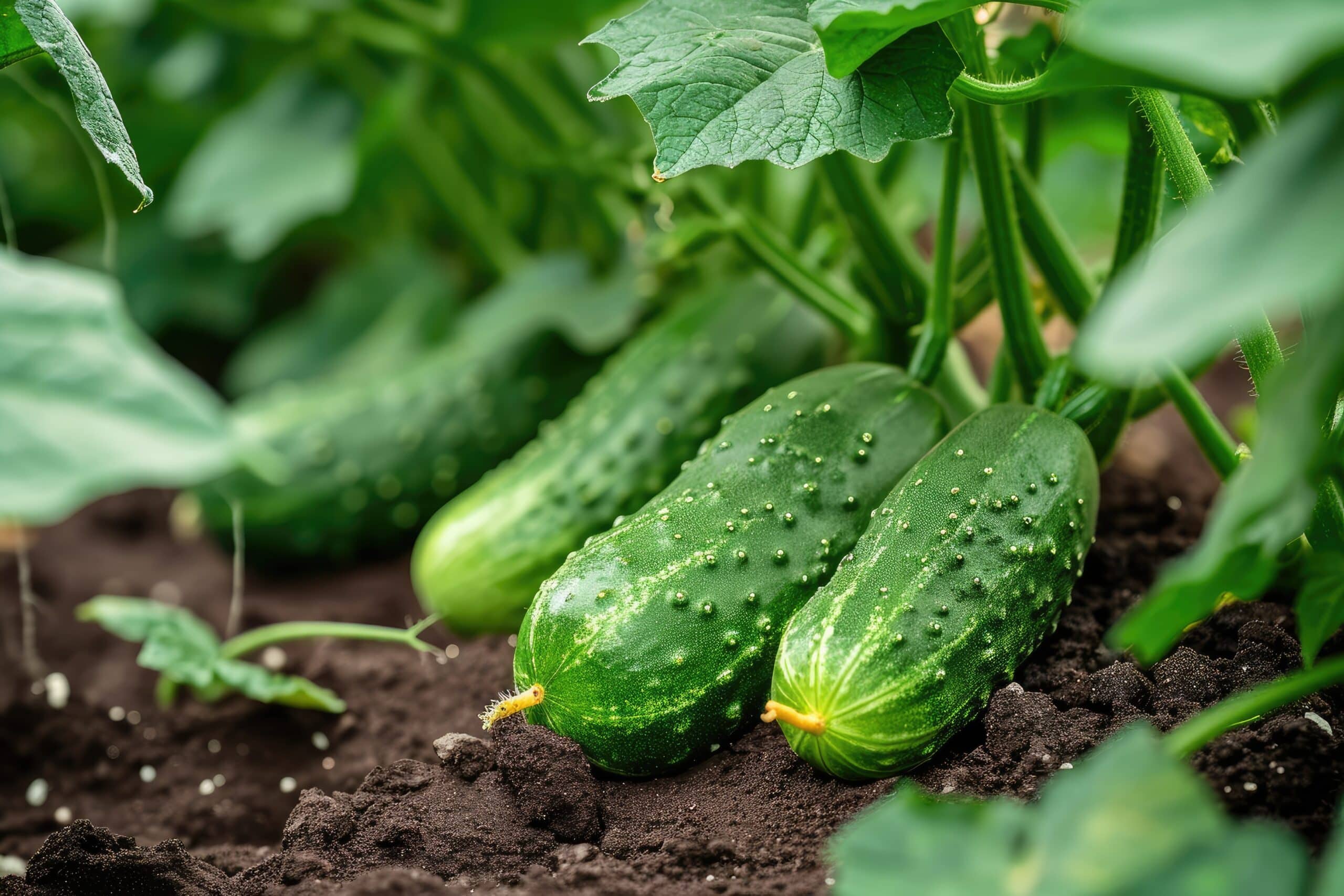What Grows Well Next to Cucumbers?
Key Takeaways
- Legumes such as peas, beans, and lentils are excellent companion plants for cucumbers because they can convert atmospheric nitrogen into a form that plants can use, providing cucumbers with the nitrogen they need to grow and thrive.
- Growing corn alongside cucumbers can be beneficial as corn provides vertical support for cucumbers to climb and maximize space, while cucumbers provide shade to corn roots, retaining moisture and preventing weed growth.
- Root vegetables like radishes, beets, carrots, and garlic are great choices to grow alongside cucumbers as they can deter pests like cucumber beetles and nematodes and help break up compacted soil, making it easier for cucumbers to establish their roots.
If you are planning to grow cucumbers in your garden, it is essential to consider companion planting. Companion planting is the practice of growing certain plants together to enhance their growth, deter pests, and improve overall garden health. When it comes to cucumbers, there are several plants that thrive when planted nearby. In this article, we will explore the best companion plants for cucumbers and how they can benefit your garden.
Legumes: Peas, Beans, and Lentils
Legumes are excellent companion plants for cucumbers. Peas, beans, and lentils have nitrogen-fixing abilities, which means they can convert atmospheric nitrogen into a form that plants can use. Cucumbers require a significant amount of nitrogen to grow and thrive, making legumes the perfect companion. Additionally, the vining nature of peas and beans can provide a natural trellis for cucumbers to climb, saving space in your garden.
Corn
Growing corn alongside cucumbers can be beneficial for both plants. Corn provides vertical support for cucumbers, allowing them to grow vertically and maximize space. Cucumbers, on the other hand, can provide shade to the corn roots, helping to retain moisture and prevent weed growth. The tall stalks of corn also act as a windbreak, protecting the cucumber plants from strong gusts.
Root Vegetables: Radishes, Beets, Carrots, and Garlic
Root vegetables are another great choice to grow alongside cucumbers. Radishes, beets, carrots, and garlic can help deter pests such as cucumber beetles and nematodes, which are common cucumber enemies. The strong scent of these root vegetables can mask the smell of cucumbers, making them less attractive to pests. Additionally, radishes have a quick growth cycle and can help break up compacted soil, making it easier for cucumbers to establish their roots.
Select Flowers: Marigolds, Nasturtiums, and Sunflowers
Incorporating certain flowers into your cucumber garden can have numerous benefits. Marigolds, nasturtiums, and sunflowers are known for their pest-repellent properties. Marigolds deter nematodes and repel aphids, while nasturtiums can help deter cucumber beetles and squash bugs. Sunflowers not only provide shade but also attract beneficial insects such as ladybugs and bees, which can assist in pollination.
Select Herbs: Dill and Oregano
Dill and oregano are two herbs that make excellent companions for cucumbers. Dill attracts beneficial insects such as wasps and predatory beetles, which feed on pests like aphids and cucumber beetles. Oregano, with its strong aroma, can help repel pests and deter diseases that may affect cucumbers. Additionally, both dill and oregano can enhance the flavor of cucumbers when used in cooking.
By incorporating these companion plants into your cucumber garden, you can create a thriving ecosystem that benefits all the plants involved. Not only will you enjoy healthier cucumbers, but you will also reduce the need for chemical pesticides and fertilizers.
Related Websites:
FAQs:
Q: What are the benefits of companion planting?
Companion planting provides several benefits in gardening. It can improve the growth of plants, deter pests, and enhance flavor. By planting certain plants together, you can create a symbiotic relationship where each plant helps the other thrive.
Q: What are the ideal soil conditions for growing cucumbers?
Cucumbers prefer well-drained soil rich in organic matter. They thrive in soil with a pH level between 6.0 and 7.0. Plants like beans, peas, and lettuce also prefer similar soil conditions and can be planted alongside cucumbers.
Q: Which plants can provide shade without competing for sunlight with cucumbers?
Cucumbers require full sunlight for optimal growth. However, plants like radishes, carrots, and lettuce have smaller foliage and can be planted alongside cucumbers without shading or competing for sunlight.
Q: How can companion plants help with pest control and disease prevention for cucumbers?
Certain plants have natural properties that repel common pests and insects harmful to cucumbers. For example, marigolds and nasturtiums can deter pests like aphids and nematodes. Additionally, planting herbs like basil and thyme can help prevent diseases that affect cucumbers.
Q: What are some beneficial companion plants for cucumbers?
Herbs like dill, oregano, and sage can be planted alongside cucumbers to repel pests and enhance flavor. Flowers such as marigolds and sunflowers attract beneficial insects for pollination and pest control. Vegetables like beans and radishes can also be grown with cucumbers, providing mutual benefits.






